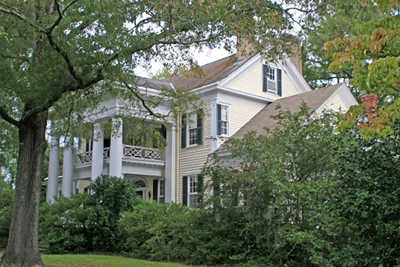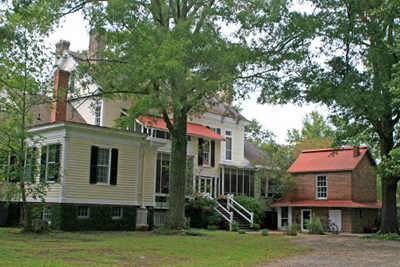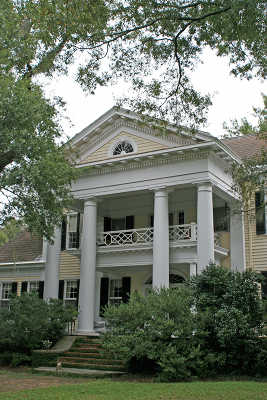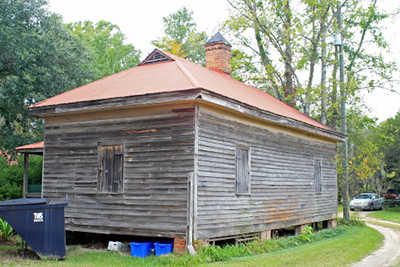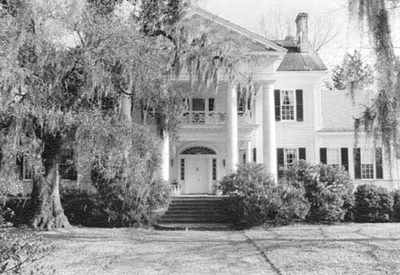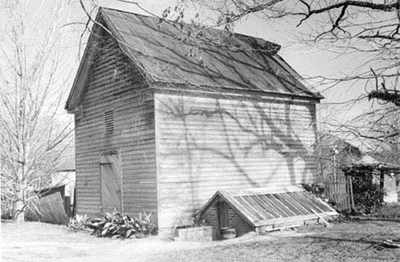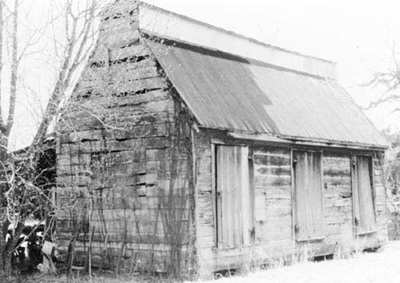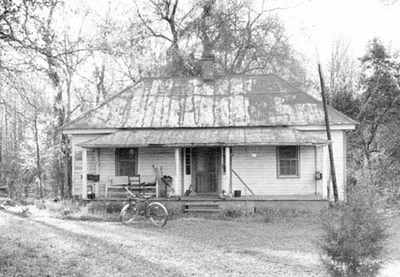Oaklyn Plantation – Darlington – Darlington County
Basic Information
- Location – Darlington, Darlington County
South Charleston Road runs through the plantation near the junction of SC 35 and SC 173 in the vicinity of Oaklyn Road
- Origin of name – ?
- Other names – ?
- Current status – Privately owned
Timeline
- 1771 – Earliest known date of existence (1, p. 22)
Thomas Williamson received a royal grant for 100 acres along the Black Creek (1, p. 22)
Thomas's brother William Williamson already owned 200 acres in the vicinity of Black Creek and was granted another 100 acres in 1771. William Palmer had originally acquired those 200 acres from a 1757 grant (1, p. 22)
A third brother, John Williamson was also granted land along Black Creek adjoining his brothers'. He received 300 acres with his 1775 grant (1, p. 22)
- 1775 – A plat of this year shows the Williamson's Bridge crossing the Black River (1, p. 22)
- 1780 – On September 16, a Revolutionary War skirmish took place at Williamson's Bridge (1, p. 5)
- 1804 – Thomas Williamson died leaving his property to son Bright Williamson I (1, p. 22)
- 1809 – William and Rebecca Williamson conveyed their 380 acre plantation to nephew Bright Williamson I. At the time, William and Rebecca's plantation included portions of William's 1771 grant, part of the land he acquired from William Palmer, plus some land that once was owned by brother John Williamson (1, p. 23).
- 1812 – Bright purchased an adjoining 180 acre tract from William Coleman (1, p. 23).
- 1813 – Bright increased his plantation's size by purchasing 220 acres from a sheriff's sale that had previously belonged to Abner Broach (1, p. 23).
- 1820 – 1,350 additional acres was added to Oaklyn Plantation when Bright acquired them from William Coleman. The Mills' Atlas of this year also shows Williamson's house as being located on the east side of the road just above Williamson's Bridge. (1, p. 24).
Bright continued to acquire property to steadily increase the size of Oaklyn Plantation.
- ? – Bright's son Benjamin Franklin Williamson I became owner (1, p. 24).
- 1830s – Current house built (1, p. 5)
Benjamin Franklin Williamson I built a one-and-one-half story house (1, pp. 5, 27)
- 1842 – Benjamin Franklin Williamson I had the plantation surveyed and requested a grant from the State of South Carolina for 2,300 acres to resolve any irregularities in the boundary or title of the plantation (1, p. 24).
After the Civil War, the lands of Oaklyn Plantation were farmed by sharecroppers and tenant farmers (1, p. 28).
- 1887 – Benjamin Franklin Williamson I passed away. His will stipulated the Oaklyn Plantation house plus the surrounding 12 acres be given to his wife Margaret Jane Williamson and then to son Benjamin Franklin Williamson II at her death. Benjamin Franklin Williamson II also received the majority balance of the rest of Oaklyn Plantation. He would later acquire most of the other portions of the plantation his father had left to his siblings (1, p. 29).
Benjamin Franklin Williamson II planted 430 acres of the plantation and the rest was farmed by tenant farmers (1, p. 29).
- 2007 – Ann Niemeyer Williamson and Benjamin Franklin Williamson III owned Oaklyn Plantation (4).
Land
- Number of acres – 100 in 1771; 2,300 in 1842; 2,584 in 1994 (1)
- Primary crops – Indigo, cotton, corn, tobacco (1)
- A canal one-and-one-half miles long travels through the center of Oaklyn Planation to Black Creek. The canal included locks which controlled irrigation of the fields (1, p. 17).
- There is an avenue of Darlington Oaks leading to the house as well as a beautifully maintained flower garden (1, pp. 7-8).
Slaves
- Number of slaves – 57 in 1850; 68 in 1860 (1, p. 25)
Buildings
- The original portion of the plantation's house was constructed in the 1830s. The house was enlarged and remodeled twice. The first time in 1886 and then again 1912-1913. The house is now two-and-half-stories with wings that are one-and-a-half stories (1, p. 5).
- The plantation contains many outbuildings including kitchen, smokehouse, tobacco curing barns, grist mill, and tenant houses (1, p. 5).
- In 1860, there were 68 slaves living at Oaklyn Plantation in 47 slave houses. None of these structures are still standing (1, p. 25).
References & Resources
- National Register of Historic Places
– Nomination Form - submitted in 1994
– Photographs, architectural overview
- 30-15 Plantation File, held by the South Carolina Historical Society
– Online Catalog
- Carolina W. Todd and Sidney Wait, South Carolina: A Day at a Time
(Orangeburg, SC: Sandlapper Publishing Company, 2008)
- 2007 Zilkha-Williamson Marriage Announcement

